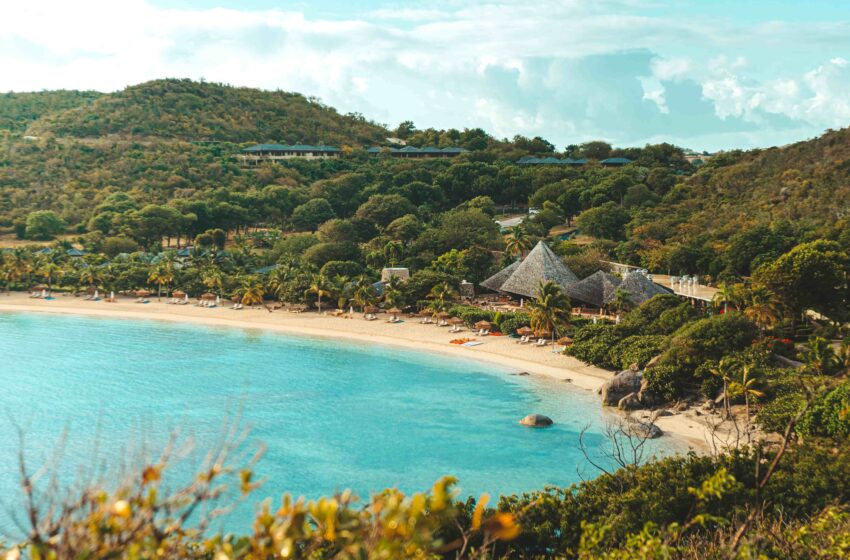
BVI’s Only Travel Guide You Need For A Great Trip in 11 Easy Steps
- Destinations Americas
Cruisit Team
- June 13, 2022
- 0
- 4701
- 74 minutes read
The British Virgin Island’ Background
Despite evidence of human presence back to 1500 BC, the islands were initially occupied by South American Arawaks in approximately 100 BC, before being displaced by the Caribs in the 15th century. When Columbus saw them on his second expedition to the New World in 1493, he christened them “Santa Ursula y las Once Mil Virgenes,” which translates as “Saint Ursula and her 1100 Virgins.” Over the next 200 years, the Spanish, British, Dutch, French, and Danish vied for control of the islands, which had become a refuge for pirates.
The islands were first colonized by the Dutch in 1648 and were acquired by the English in 1672. When the British seized the Dutch colony on Tortola Island they also acquired Anegada and Virgin Gorda, which became part of the British Virgin Islands.
The archipelago was separated into two territorial divisions in the 17th century, one English and one Danish. During the 18th and early 19th centuries, sugarcane produced by slave labor fueled the islands’ economy. The Danes took possession of Saint Thomas, Saint John, and Saint Croix. The British eventually developed sugar cane plantations farmed by slaves transported from Africa, and the islands’ masters flourished until the mid-nineteenth century, when slavery was abolished and a series of hurricanes nearly ruined the business.
The United States paid $25 million for the Danish half, which had been in economic decline since the abolition of slavery in 1848, to form the United States Virgin Islands (USVI). Before acquiring colony status in 1960 and autonomy in 1967, the British Virgin Islands were managed as part of the British Leeward Islands with St. Kitts and Nevis. HM adopted its most recent constitution in 2007. The Queen continues to be Head of State, with the elected premier, now Orlando Smith, presiding over the single-chamber parliament.
Financial services provide more than half of the islands’ revenue, prompting some to call the region a tax haven. It’s worth noting that the BVI’s economy is inseparably linked to the bigger and more populated US Virgin Islands to the west; the US dollar is the official currency.
Welcome to the British Virgin Islands, where nature and turquoise sea will surround you no matter where you go. A country where fungus isn’t a mushroom but a type of island music called after a cornmeal national dish cooked with okra. The British Virgin Islands are conveniently positioned in the Caribbean Sea, just east of Puerto Rico, and are only a short flight or boat journey from St. Thomas to kickback at one of their many thousands of beaches.
“Marked by turquoise waters gently crashing against pristine white beaches, the British Virgin Islands also have lush expanses of beautiful tropical flora reaching to the horizon with limitless warm sunshine in the Caribbean.“
Besides the random choices of fish and chips, there’s not much that screams “British.” The majority of visitors come to unfurl a sail and wander around 50 isles, 15 of which are inhabited. This is one of the world’s sailing hotspots, with consistent winds, calm currents, sheltered coves, and pirate bars. These untouched islands are like waking up in a fantasy.
There are 4 major islands as well as a few smaller ones. The primary islands include Tortola, with Road Town being the territory’s capital and biggest city, followed by Virgin Gorda, Anegada, and Jost Van Dyke.
While being a British territory, the BVI is a cultural melting pot of American, East Indian, Dutch, and African influences. Basketball has surpassed cricket in popularity, and bush tea (an herbal brew prepared from native herbs) has surpassed black tea in popularity. Every festival on the islands has local scratch (aka fungus) bands with guitars, ukuleles, washtub basses, gourds, and triangles, and traditional dance troupes swaying to the beat of European and African music.
The British Virgin Islands are a postcard-perfect tropical paradise. White-sand beaches, fantastic diving and snorkeling, crystal-clear turquoise water, picturesque hikes, plenty of boating options, and then all the inexpensive rum you can bear can be found on these lovely islands.
The main island Tortola is well-known for its full-moon celebrations and nautical prowess. Billionaires and boat owners adore Virgin Gorda and its mystical rocks. Anegada sits on an isolated coral and features a hammock for those looking to retreat. But who can ignore the ‘barefoot island’ of Jost Van Dyke, whose Main St is a jazzy beach?
The island territory has a unique personality, and despite the expensive yachts and famous guests, they are still very underdeveloped. But life in the British Virgin Islands isn’t all hammocks and pia coladas. If unending leisurely days (and late-night partying) aren’t your style, this corner of the world has enough to keep you active, from festivals and diving to picturesque hiking routes and secret tidal pools.
And, while these islands are inherently lovely, it is the people who will make you fall in love with the place. Yes, the beaches are beautiful, the rum is inexpensive, and the weather is pleasant, but you can get those in many other places of the world. The locals are what truly distinguishes these islands for visitors to the BVI. Everyone is really helpful and polite, ensuring that you have an unforgettable stay.
Heading inside, you won’t know how long you should devote to each site, but the completely useless response is that it varies. It is influenced by your choices and travel style. If you’re looking for outstanding on-island dining, Salt Island is probably not the place for you. On the other hand, if you’re seeking for quiet, uncrowded areas, your charter skipper may assist you identify little coves where you can spend the evening cooking on board and enjoying the peace and quiet. It also depends on the type of boat you use on your island-hopping excursion, if you use one at all.
You’ll be able to speed around quite fast on a motor boat, going against the grain with your clockwise schedule. If you’re sailing, you’ll probably want to travel the opposite way, starting on the south side of Tortola and making your way up to Virgin Gorda, then around the north side. If you don’t have or can’t afford a boat, there are still plenty of things you can do to enjoy the island, so don’t worry.
What is the most enjoyable aspect? You can’t go wrong with any option or price range. Each island has its own personality and a stunning range of landscapes that will keep you enthralled for the length of your journey across the BVI, whether you are a backpacker or a luxury seeker.
Look no farther than Cruisit for the best guide if you want to visit the British Virgin Islands! Here’s everything you need to know before visiting the British Virgin Islands! So keep reading to learn more about the British Virgin Islands, including what to expect, activities to do, a sample itinerary and much more.
- Explore the deserted Salt Island.
- Take a Gorda Peak hike
- Drink at Willy Thornton’s
- Dive and snorkel around the RMS Titanic. Rhone
- Spend some time on Beef Island.
- Take a dip in The Baths National Park.
- North Sound Watersports
- Relax at Smuggler’s Cove Beach.
- Snorkel in the coral maze on Anegada Island.
- Cane Garden Bay attracts a large throng.
- See the candy-colored West Indian-style buildings at Soper’s Hole
- Dive at Rhone National Maritime Park & RMS Rhone Shipwreck Dives
- Wander Sage Mountain National Park
- Dip your feet in Sandy Cay
- Visit the secluded Peter Island
- Hurricanes and tropical storms are prevalent in the British Virgin Islands from June to November.
- Don’t do it in the British Virgin Islands if you wouldn’t do it in your home country!
- While lodging in the British Virgin Islands is expensive, with rates starting at $130 per night minimum, there are several options to save money, like renting an Airbnb, with stays starting at $55, or stay with a local with Coachsurfing if you’re on a tight budget in the BVI.
- There are a few campgrounds for people visiting with a tent, with basic tent sites starting at $20 USD per night.
- Because so much food is imported, prices in the BVIs are often exorbitant. Nonetheless, even on a tight budget, you may have delicious meals when visiting the British Virgin Islands.
- If you plan on cooking for yourself, a week’s worth of shopping for basic basics like rice, pasta, seasonal veggies, and some seafood costs $60-70 USD.
- The British Virgin Islands use the US dollar as their currency, and most establishments accept cash and credit cards.
- Locals commonly address people as “Mr.” “Mrs.” or “Miss,” and you’ll seldom hear them yelling someone’s name from afar, as it is considered to be poor manners.
- Ferries and charter flights operate less often after 4 p.m., so anybody arriving in the late afternoon at Tortola’s Terrence B. Lettsome Airport (EIS) should check with their accommodation to verify further transportation is available.
- Get a car rental: If you plan on visiting several destinations on larger islands such as Tortola, you may have difficulty obtaining cabs in some of the more remote areas (they tend to stick around more crowded locations). Even at $55-70 USD per day, renting a car on these islands is preferable. It will provide you more freedom and, if you share costs with others, will be less expensive than cabs.
- Look for price reductions and special offers – The BVI Tourism website (bvitourism.com) provides a segment for package deals and discount offers, which can result in significant savings. During the off-season, you may often find special discounts and coupons even at small groceries and retail establishments, and they may provide an additional 5% off at the checkout.
- Purchasing adequate travel insurance will save your life and money in the event of an emergency, so don’t overlook it. Not to mention it is mandatory now.
Crime & Scams in The British Virgin Islands
Crime is nearly non-existent, with crime levels in the British Virgin Islands being comparatively low, yet major instances such as burglary and narcotic gun crime do occur. The homicide rate was last reported at 8 per 100,000 in 2022, making it a safe holiday destination.
In general, the BVI is a pretty safe location, with a few robberies, muggings, car thefts, and damaged windows. Minor robberies and muggings occur late at night outside Road Town establishments, particularly in poorly lit places around Wickham’s Cay I and Waterfront Drive. Tortola, however, is a fairly safe area to visit outside of Road Town. However, never leave important items unattended on the beach when swimming.
Montserrat is the island with the lowest crime rate in the entire Caribbean. St. John is pretty safe, but they do experience property crime and a few violent crimes from time to time as well.
Healthcare in The British Virgin Islands While Traveling
Peebles Hospital in Road Town, Tortola, is the only public hospital in the British Virgin Islands. The Bougainvillea clinic is also a private hospital (also in Road Town). There are day clinics in Anegada, Virgin Gorda, and Jost Van Dyke to address the non-emergency medical requirements of the population of those islands. The other islands have no medical facilities. Virgin Islands Search and Rescue (VISAR) is a volunteer group that responds to medical crises at sea or on the outlying islands 24 hours a day, seven days a week. VISAR transfers victims to the nearest site for the ambulance transfer. Two of the most reliable hospitals in the Caribbean are relatively near the British Virgin Islands.
There are no mandatory vaccinations required for entry into the country from Europe or North America. But, before every trip, make sure you are up to date on all routine vaccinations. Among the key recommended vaccines globally are chickenpox (Varicella), diphtheria-tetanus-pertussis (DTP), influenza (flu), measles-mumps-rubella (MMR), polio, and shingles. Obtaining immunization cards for Yellow Fever, Hepatitis A and B, Typhoid, Rabies, and Meningitis is important when traveling.
When visiting the British Virgin Islands (BVI), you are required to purchase travel medical insurance. However, it is always important to have comprehensive medical coverage when traveling because you never know what you could encounter while overseas.
Shoulder Season
Prices for hotels, excursions, and boat rentals are up to 50% lower from October to November and May to June than during the busy season. It frequently rains at this season, although only in brief bursts. Every day, temperatures average 30°C (87°F). The greatest time to visit the British Virgin Islands is from September to November, before the winter vacation throngs arrive.
High (Peak) Season
The months of December to March are by far the busiest and most expensive for visitors visiting the BVI. People come to escape the frigid northern winters (particularly around Christmas and New Year’s), because it’s always bright with minimal rain. The daily temperature ranges between 22 and 28 degrees Celsius (72 and 83 degrees Fahrenheit). Winter and spring are ideal diving seasons due to high visibility. These are ideal sailing months, with consistent winds and a thriving boating environment.
Off-Season
Remember that hurricane season lasts from June to November, so keep an eye on the weather if you travel during this period. If you prefer a bit more isolation, the low season months of late May, June, and November are also wonderful seasons to go sail around the BVI. Off-season travel in the Virgin Islands has several advantages. First, from late May to mid-November, hotel costs are reduced by a shocking 25% to 50%. Second, there will be less people at swimming pools, beaches, resorts, restaurants, and stores. The hurricane season lasts from August through September.
By Plane
There are still no direct flights from the United States or many other nations to the British Virgin Islands, but there are two alternatives. The first option is to travel directly to Tortola’s Beef Island Airport. The second option is to travel to St. Thomas, US Virgin Islands, and then take a boat or airplane to Tortola, BVI. Most guests arrive at St. Thomas or San Juan, Puerto Rico, and then fly or ferry to the British Virgin Islands. There are also a few regional airlines that fly between Tortola and the other islands.
The trip from San Juan to Terrance B. Lettsome International Airport takes 40 minutes on Silver Airways or Cape Air (EIS). Flights from St. Thomas, USVI, take around 20 minutes.
By Boat
Ferries play a significant role in transportation between the United States Virgin Islands and the British Virgin Islands. They are also the least expensive method. Public ferries are the primary mode of transportation between St. Thomas and St. John, as well as the sole route to reach Water Island.
Both the USVI and the BVI have regular, dependable, and reasonably priced ferry services. Take a taxi from St. Thomas to the ferry terminal/dock and then an inter-island ferry to your final destination. The ferry ride from St. Thomas to Tortola is around one hour, including time for boarding, customs, and sailing. The ferry costs between $60 and $75.
Private vessels (under 78 feet in length) and crew are now permitted to visit the British Virgin Islands under a new protocol. On the official government website, you can learn more about traveling to the British Virgin Islands by private boat. Private boats and yachts are permitted to enter after meeting the relevant standards, and once cleared at the port of entry, you may proceed to your destination.
By Plane
Flights to and within the British Virgin Islands are operated by Air Sunshine, Cape Air, Fly Bode Caribbean Air Charter, interCaribbean Airways, Island Birds Air Charter, Liat, Seaborne Airlines, and Tropic Ocean Airways.
By Car
On the bigger islands of Virgin Gorda and Tortola, renting a car is possible and convenient. On Virgin Gorda, rental agencies can be found next to the yacht harbor; on Tortola, agencies can be found outside Road Town at the ferryboat pier. A valid driver’s license is required and a minimum age of 25. Remember to drive on the left and watch out for potholes, blind corners, and perhaps a few cows, roosters, and iguanas, especially on Anegada. C ars can be rented for as little as $55 USD a day.
By Taxi
Taxis are a convenient method to get about most of the islands. There are stands at ferry terminals and airports, but hotels on more developed islands may summon one for you. The cab drivers are obviously better equipped to manage the island than you would be, and they also serve as excellent tour guides. However, there is some cost involved. Taxi charges varies depending on the island or cay: You may obtain an estimate of the pricing for your location by visiting BVI Tourism’s website. Remember that the fee is decided by the distance traveled as well as the number of passengers in the car.
The most prevalent type is the colorful open-air safari cab. They have advertised prices, but you should confirm your location and cost before boarding. It’s also a terrific way to meet locals. Private cabs are metered and carry rate cards, which eliminates misunderstandings before boarding. Taxi fares are set by the government, but they vary by island, location, and, of course, distance. The majority of rides cost between $5 and $30 USD, with an average of $15 USD. Because hailing a cab is not always an option, obtain the taxi company’s contact information. However, renting a car is likely to be a more financially wise choice though.
By Bus
An open-air safari bus is an affordable way to get to well-known tourist destinations. They carry around 20 passengers and cost between $2 and $5 for a one-way journey from the ferry pier to a popular destination such as The Baths of Virgin Gorda. This is a particularly efficient alternative if you’re only visiting an island for a single day. Van-style buses, which are most common in Tortola, are less useful for getting about town. The cheapest method to go to well-known tourist destinations, such as The Baths on Virgin Gorda, is via open-air safari bus. One way will cost between $2 and $5 USD. Locals on Tortola also utilize van buses to move about, although they aren’t practical for viewing the attractions.
By Boat
Anegada Express, Inter Island Boat Services, Global Ocean Transport – VG Car & Truck Ferry, Native Son Ferry, New Horizon Ferry Service, Jost Van Dyke, Road Town Fast Ferry, Sensation Ferries, Smith’s Ferry Services, Tortola Fast Ferry, Virgin Gorda Transport, Speedy’s all operate around islands and are an efficient method to get from one island to the other in the British Virgin Islands. Ferries are the main mode of transportation in this area, not just for getting across the several islands but also for getting to remote beaches. A round-trip ticket from Tortola to Jost Van Dyke costs around $30 USD, while a return ticket from Tortola to Virgin Gorda costs about $21 USD.
By Bike or Scooter
On Anegada, S&K Amazing Rentals rents scooters for $45 USD for a full day or $35 USD for a half-day. In Tortola, Last Stop Sports hires bicycles for $30 USD per day. However, at such pricing, it is clear that hiring a car is a better financial option, unless you are the eco-friendly advocate, of course.
By Hitchhiking
Hitchhiking is popular among both residents and tourists. Because cabs and automobiles are costly, many residents share rides or hitchhike. For further information, visit Hitchwiki.
SIM Cards & Calls in The British Virgin Islands
A British Virgin Islands SIM card costs $10 from Digicel and $20 from Flow and CCT (Wireless) at their official stores. They are not available for purchase at Tortola-Terrance B. Lettsome International Airport (EIS – previously Beef Island Airport). The plans offered by Digicel, Flow, and CCT in the BVI are, of course, quite pricey due to the remoteness of Caribbean islands, but they are nearly twice that of other surrounding island states. Plans start at $6 for 1 GB with a one-day validity and range up to $20 for 2GB with 7 day and up to 30 day validity, depending on the provider.
You also have the option of purchasing a prepaid eSim card like from Airalo, SimCorner, or Nomad. The companies provide data-only plans to put on a phone that is eSim ready, so make sure your phone is compatible. It is also possible to opt-in for a WiFi Hotspot from Solis. Check before you travel because they service certain destinations. Airalo by far has the most coverage of almost 180 countries.
Local Internet & WiFi in The British Virgin Islands
WIFI is available at most pubs and restaurants in the British Virgin Islands. Of course, hotels and flats frequently provide internet connection, although at snail’s pace. The growth of broadband Internet connections in the British Virgin Islands is slow. Approximately 78 percent of all inhabitants have Internet access, with 22 percent having fast Internet connections that are at least as fast as the previous ISDN (more than 256 kbit/s). Many people are discouraged by the hefty internet package prices in the BVI which is part of the reason why the region is lagging behind.
Top Places in The British Virgin Islands

The Baths
The Baths is a beach location on the Caribbean island of Virgin Gorda, part of the British Virgin Islands. The Virgin Gorda Baths are a popular anchorage and one of the most well-known sites in the British Virgin Islands. This unusual bay is dotted with massive granite rocks, which form sea pools and grottoes ideal for snorkeling and exploration.
Gorda Peak National Park
One of the most beautiful places in the British Virgin Islands is Gorda Peak National Park. Its 107 hectares of semi-rainforest are densely forested, with dry forest covering the highest slopes. There are also reptiles, tree frogs, birds, bats, army crabs, and the world’s tiniest lizard, the Virgin Gorda gecko, in the park. If you’re weary of all the aquatic activities, the Park is a great place to go for some land-based nature with two well-marked hiking trails leading to the summit of Gorda Peak.
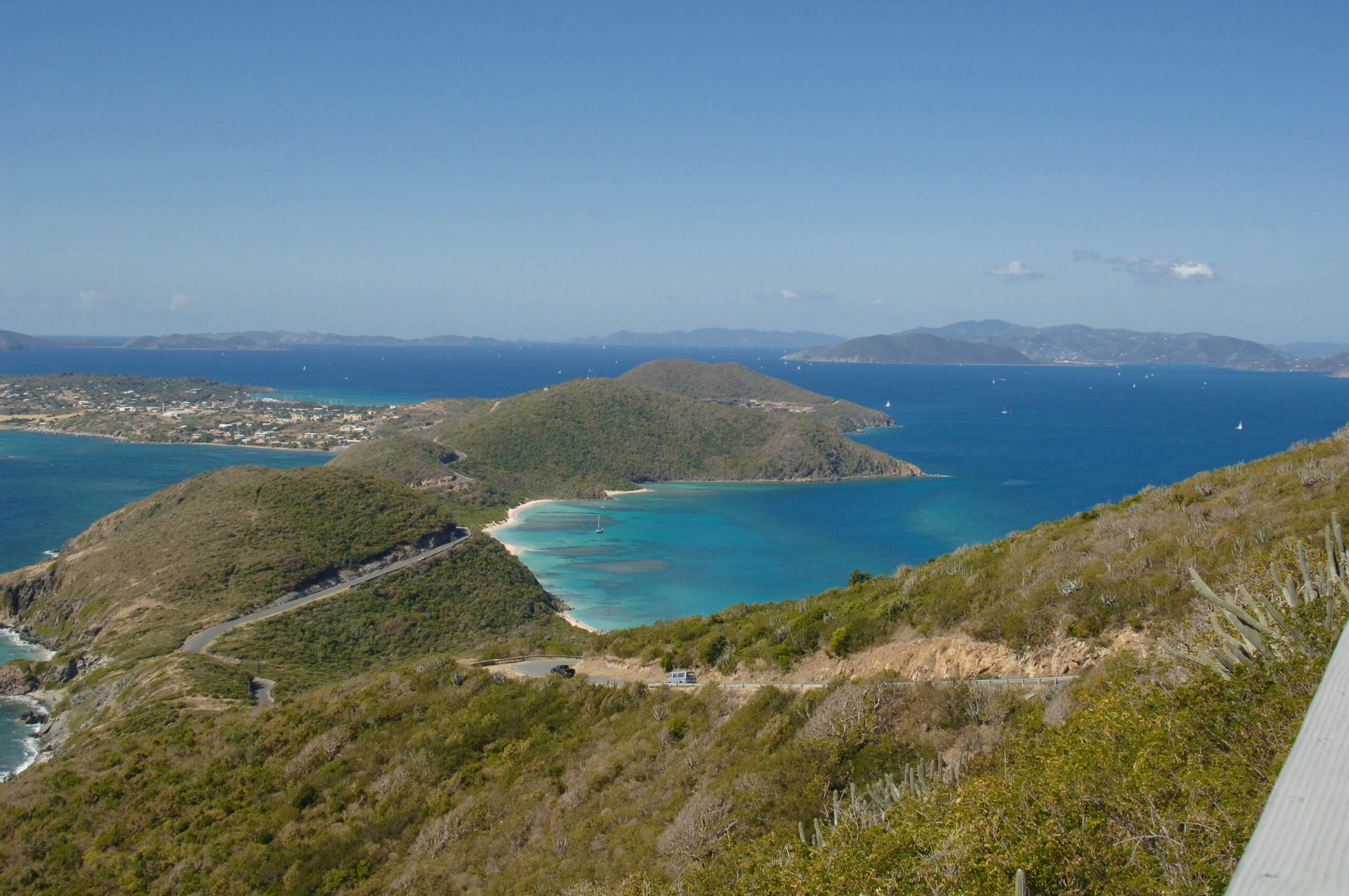

Smuggler’s Cove
Smuggler’s Cove is a beautiful stretch of sun-bleached beach and blue sea, with an undulating emerald-green headland providing a gorgeous backdrop for your aquatic adventures. There are no stores, resorts, or services on the island, although a few of basic beach shacks along the shore provide food and beverages. Access to the beach is through a bumpy dirt road, which adds to the remote atmosphere and keeps people at bay. This beach should be at the top of your list if you’re bored of the crowded scene and seeking for low-key activities in Tortola.
Sage Mountain National Park
Sage Mountain is the highest peak in the United States and the British Virgin Islands, and it also serves as the island’s first national park, allowing visitors to explore Tortola’s natural forest via 12 pathways, the most of which are looped. The Central Trail, which takes you through the forest to an observation point in less than an hour, provides breathtaking views. If you want to stretch your legs or go away from the beaches, this is an excellent option. The perspectives offer panoramic views of the Virgin Islands, which are surrounded by turquoise seas—possibly the best scenery views in the BVIs.
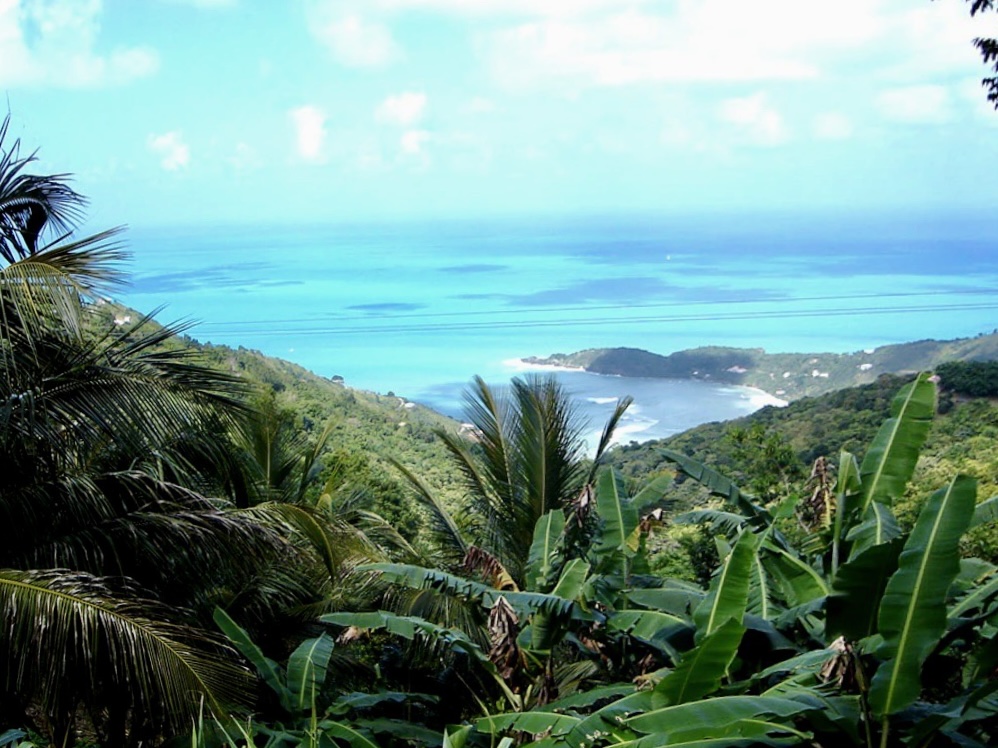
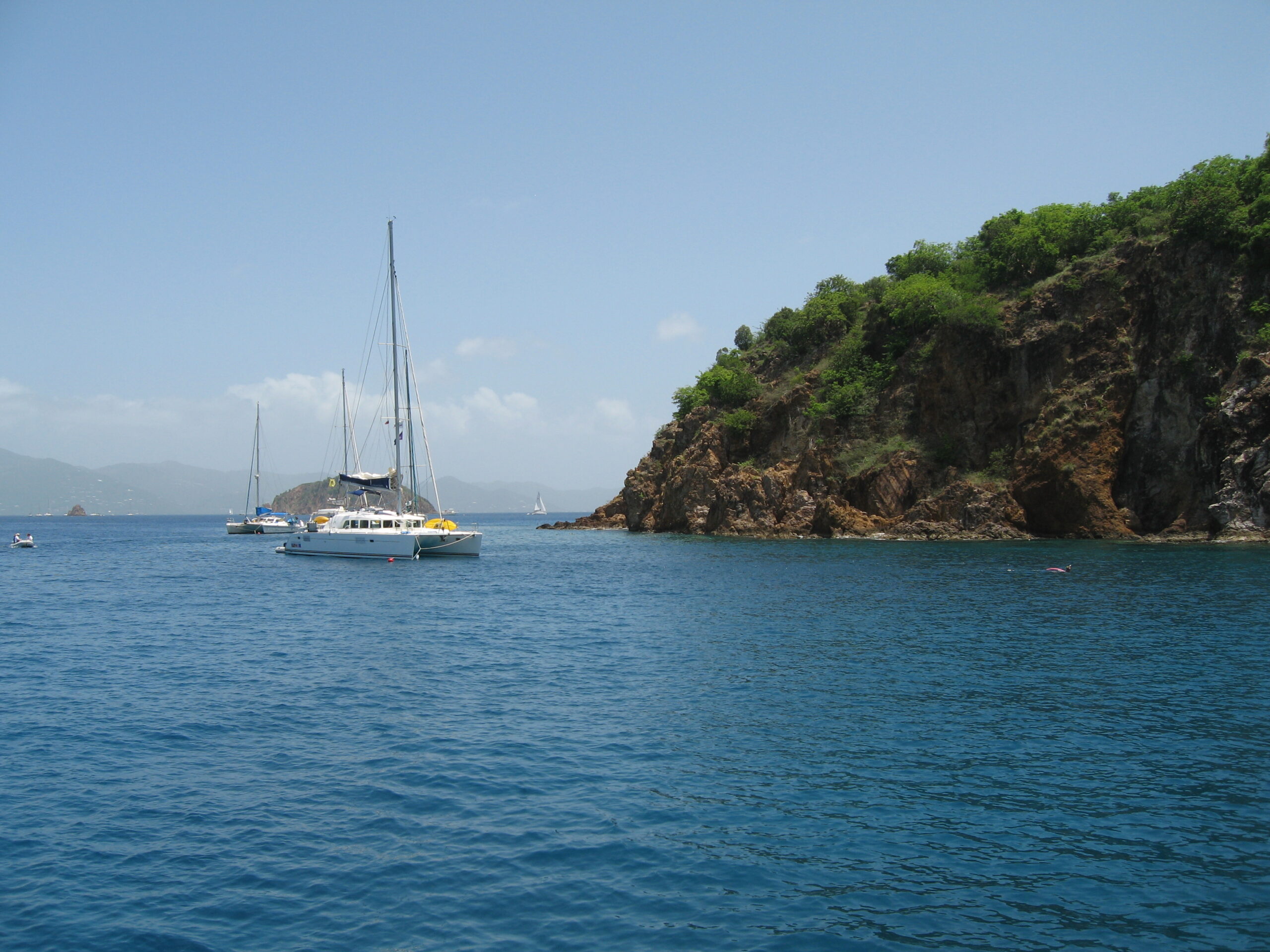
Norman Island
Norman Island, located in the British Virgin Islands archipelago to the south of Tortola, is an excellent snorkeling site where you may swim among some of the best aquatic species in the region. Three cliffside tunnels near the western harbor provide ideal conditions for amazing snorkeling trips with schools of colourful tropical fish. Learn about the fascinating pirate legends associated with the history of this island paradise and the alleged riches buried here.
7-day Itinerary in The British Virgin Islands
Day 1
Arrive in BVI, Head to Jost Van Dyke
Your first day in the British Virgin Islands is a transit day, which means you’ll arrive early or late depending on where you’re coming from.
Use your first day to get to know the area by walking about, visiting beach bars, and visiting one or more beaches such as Trunk Bay, Sapphire Beach, White Bay, Sandy Cay, or Sandy Spit. Visit the Bubbly Pool after lunch at Foxy’s, Harris’ Place, or Sidney’s Peace & Love. On your first evening in the British Virgin Islands, eat at Corsair’s, relax, and then spend the night at your accommodation.
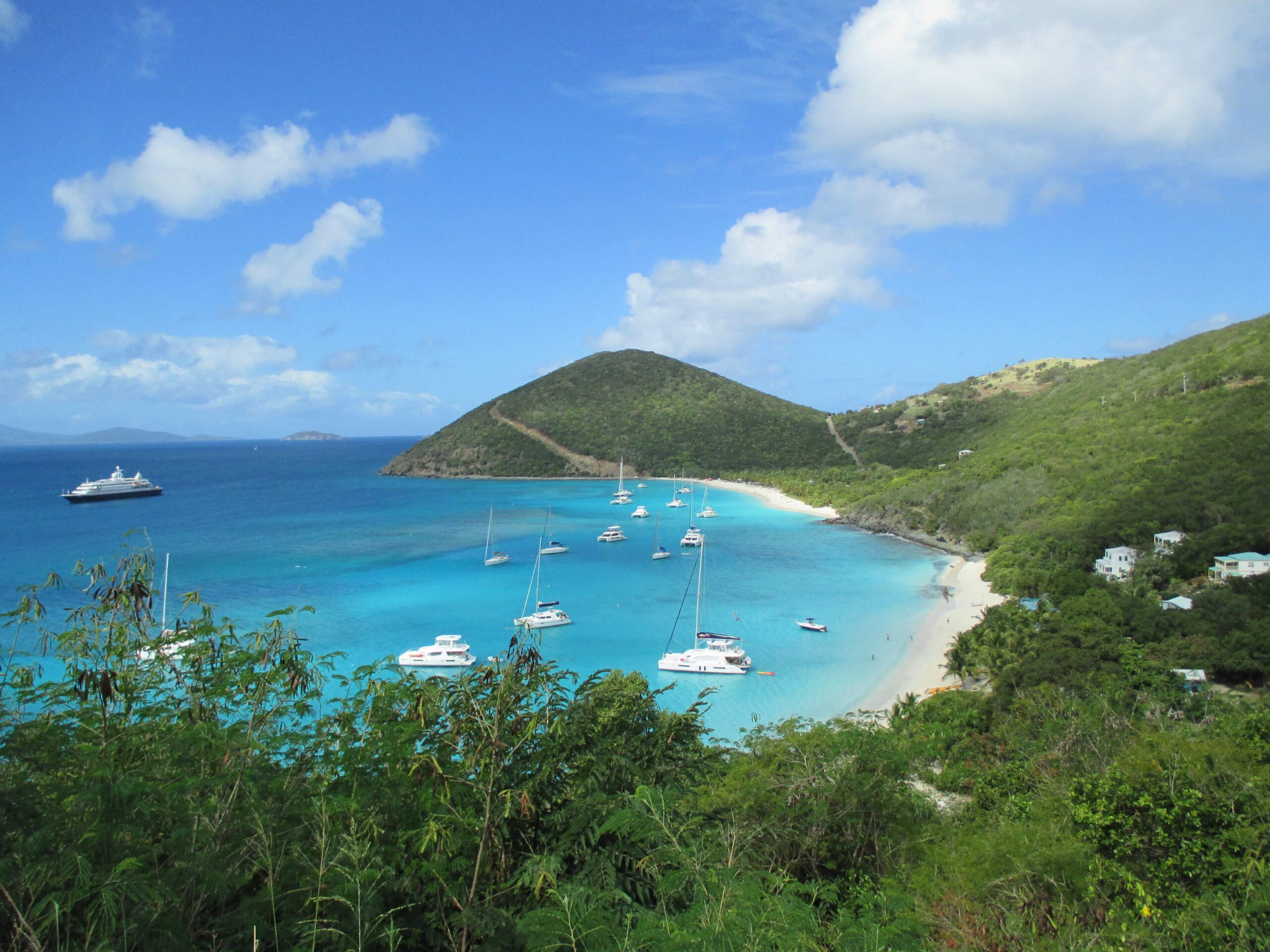
- High end: Ivan’s Campground, Ocean View Villas, White Bay Villas & Seaside Cottages
This section will be added shortly.
As you may have read in previous parts, there are only a few direct flights to the BVI from St. Thomas, San Juan, Puerto Rico, and Philipsburg, St. Maarten. San Juan, Puerto Rico, and St. Thomas are the two most convenient entry points for visitors from the United States.
Once at Tortola (your entrance point), go to the West End Ferry Terminal to get a ferry to Jost Van Dyke.
There are just a few ferries that run during the day. Ferries leave from the West End Ferry at 8:00 a.m., 10:00 a.m., 1:00 p.m., 4:00 p.m., and 6:00 p.m., getting you into Jost Van Dyke in almost 30 minutes; the sooner you can travel, the greater your chances of having the full day to settle in and explore.
Day 2
More Jost
Your second day begins with a delicious breakfast, followed by planning for a full day of exploring and taking in the White Bay scene, if you haven’t already done so on day one. Enjoy your day at Hendo’s Hideout, then head down to the beach for a chilled beverage from Soggy Dollar before exploring the scene further afield. Later, during dinner, you can select from a variety of options, followed by a second cocktail at Soggy Dollar, Foxy’s, or any other location of your choice. When you’re through, return to your hotel and get ready for tomorrow’s voyage.
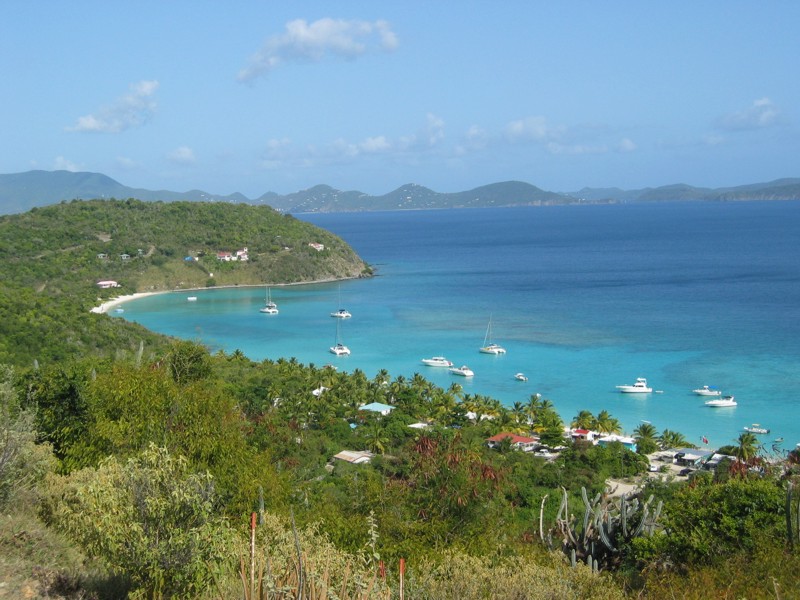
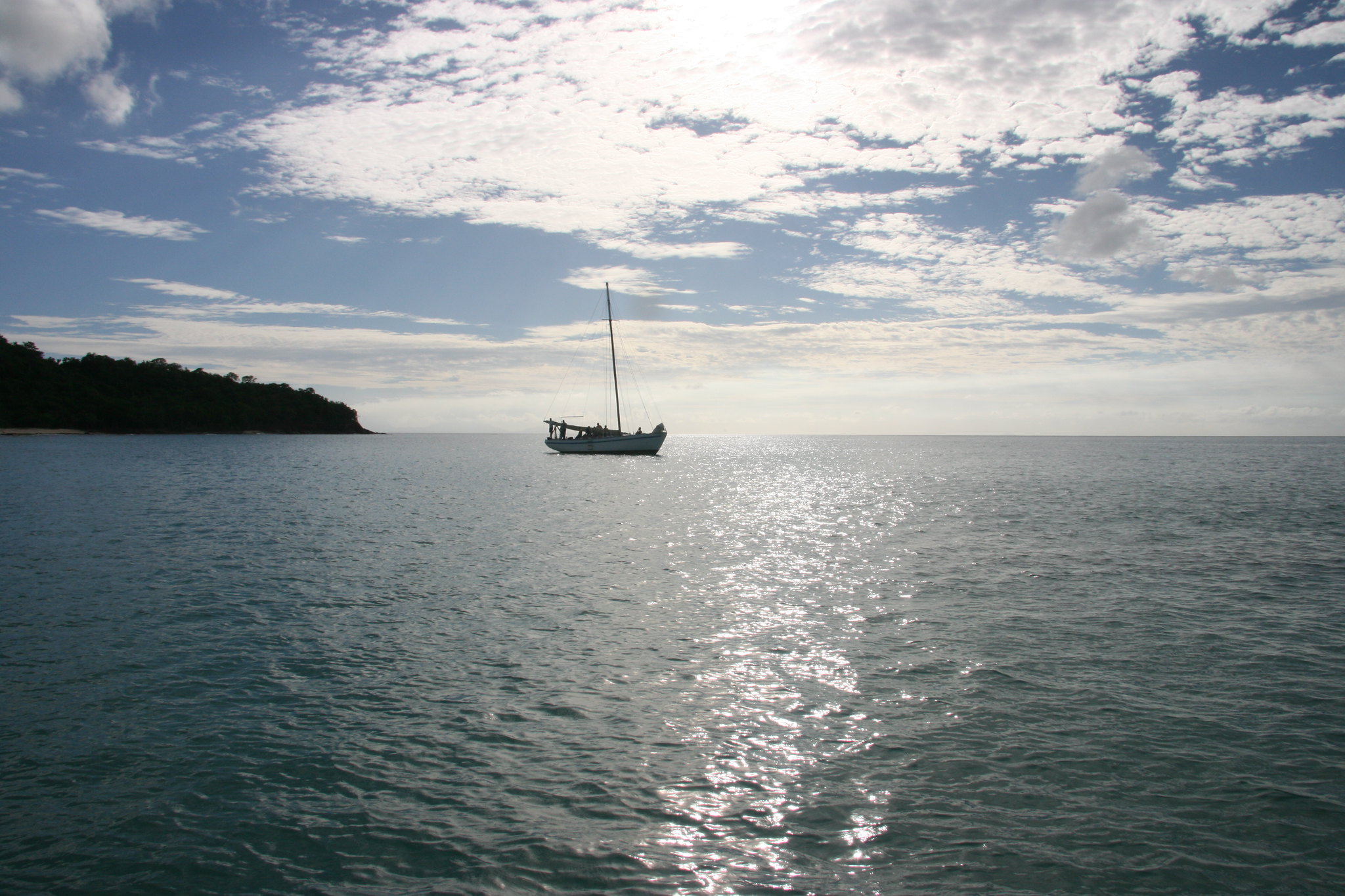
Day 3
Off to Virgin Gorda
Your journey to Virgin Gorda, BVI begins today, whether you take a private charter, a shared charter, a motorboat, a ferry, or a water taxi.
Consider spending your first day in North Sound, maybe seeing one or more beaches in Spring Bay, Necker Island, Savannah Bay, Gorda Peak, or Copper Mine National Parks. Enjoy the sunset at Bitter End Yacht Club, and then have a late dinner at Sugarcane, Hog Heaven, Saba Rock, Bath and Turtle, or Rendezvous Bar.
- High end: Bayview Vacation Apartments, Mango Bay Resort
By Ferry
Take the ferry to Cruz Bay, St. John, and then to the Virgin Gorda Ferry Docks. You may also take a boat from Jost Van Dyke Island to Spanish Town via Red Hook, St. Thomas, which takes around 2 hours 45 minutes.
By Water taxi
You'll have to follow the same path as the ferries. It takes around 2 hours and 30 minutes to go reach Bitter End, Virgin Gorda.
By Yacht Charter
Your captain will pick you up from Great Harbour at 1 PM and take you directly to Virgin Gorda.
Day 4
The Baths and Norman Island
After breakfast, go early on day four of your BVI itinerary to spend the morning visiting The Baths on Virgin Gorda. This will undoubtedly be one of the highlights of your trip. Arrive at least by 9 a.m., but if possible, arrive earlier to avoid the hordes that arrive early. Spend the morning and early afternoon in The Baths before departing Virgin Gorda and heading towards the smaller islands that dot the south side of Tortola.
Head to Norman Island in the afternoon to enjoy the day before exiting for the night to your hotel or aboard your charter. Float about, dive in the caves in the afternoon, get a cold drink at Willy T’s, then dine at Pirate’s Bight for an unforgettable evening on land.


- High end: Bayview Vacation Apartments, Mango Bay Resort
By Ferry
Take the ferry to Cruz Bay, St. John, and then to the Virgin Gorda Ferry Docks. You may also take a boat from Jost Van Dyke Island to Spanish Town via Red Hook, St. Thomas, which takes around 2 hours 45 minutes.
By Water taxi
You'll have to follow the same path as the ferries. It takes around 2 hours and 30 minutes to go reach Bitter End, Virgin Gorda.
By Yacht Charter
Your captain will pick you up from Great Harbour at 1 PM and take you directly to Virgin Gorda.
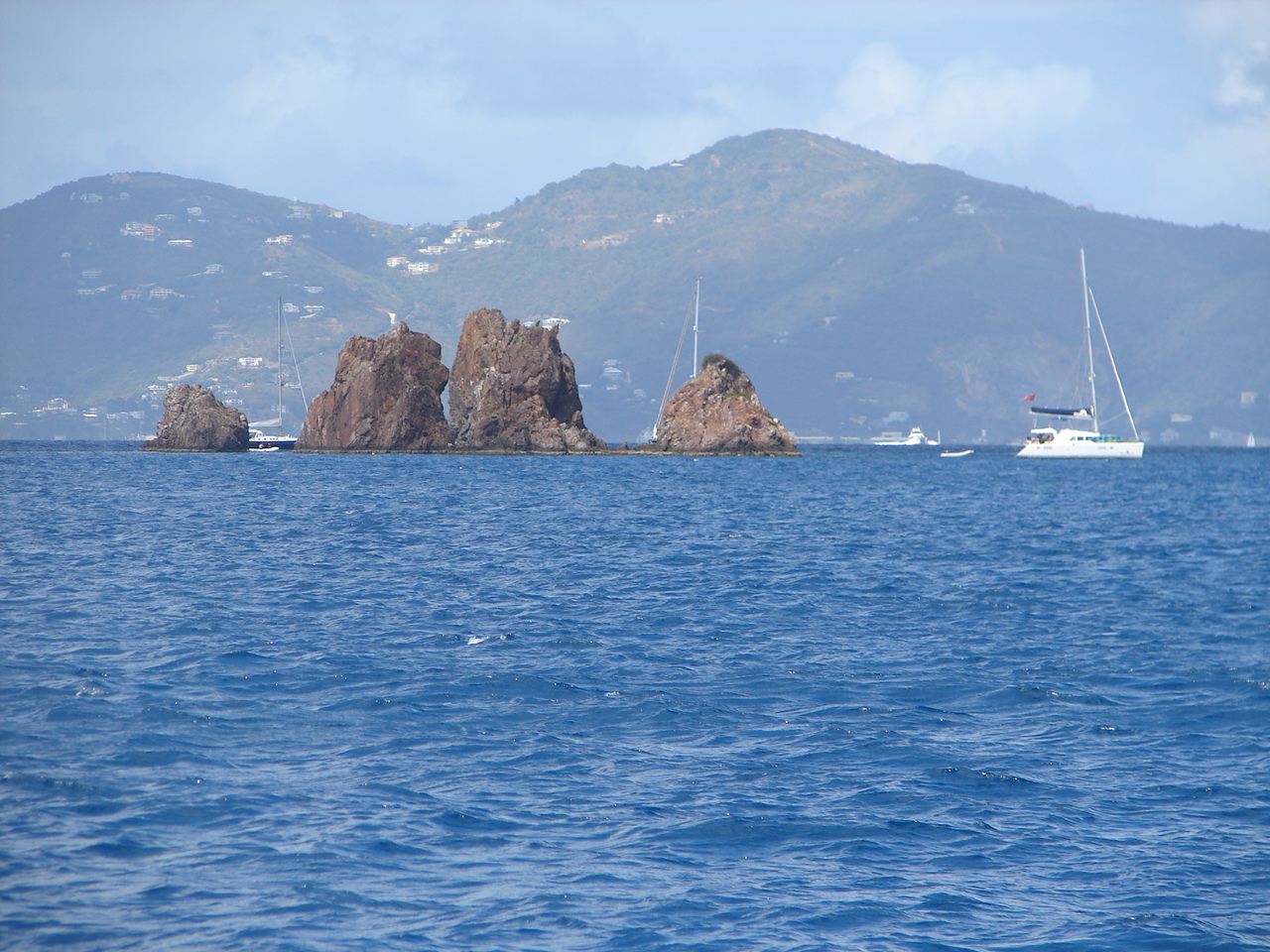

Day 5
Island Hopping
Next, take your private yacht or charter from Norman Island to the Indians in the early morning hours, approximately 6 a.m. Step out to the rock formation for a spectacular vista. Spend a few hours at the Indians before setting off and heading east along the island chain to Peter Island. If you don’t have a boat, don’t worry; just get to Peter Island right away.
After a morning at The Indians, spend half of the day at Peter Island, on the island’s backside, where the snorkeling is out of this world, and then make a second stop at Deadman’s Bay, the site of Peter Island Resort. Snorkel at your first stop and don’t forget to paddle at both. During your second stop, take in the beautiful beach scenery. Have a hearty breakfast on board or at one of the fantastic eateries onshore! In the late afternoon, depart Peter Island for Salt Island, where you will spend the rest of the day.
On Salt Island, there is nothing for travelers to eat or stay in terms of restaurants or lodging, so if you don’t have a charter, stay at Peter Island. It is ideal for a peaceful break where you can relax on the beaches and have the entire place to yourself.
- High end: Peter Isalnd Resort, Peter Isalnd Spa
By Ferry
By Water taxi
By Yacht Charter
Day 6
Cooper Island
Make your way to Cooper Island in the early morning, which is only a few minutes by boat from Salt Island. Spend the full day at Cooper, the longest stop on your tour (apart from Jost Van Dyke, of course). Spend the day paddle surfing, swimming with sea turtles, exploring Cooper Island’s stores and bars, and soaking up the sun on the lovely beaches or onboard your yacht. Consider having supper at Cooper Island Beach Club and then spending your final night stargazing on a clear night.

- High end: Cooper Island Beach Club
By Ferry
By Water taxi
By Yacht Charter


Day 7
Last Day at Tortola
Get your breakfast and morning coffee at Cooper Island and spend a couple of early hours absorbing in your surroundings before leaving out for Tortola on your final morning onboard your charter, or else. Your charter will very likely finish at noon. Arrive at Tortola by early afternoon, hire a car if feasible, and spend your last day touring more of Tortola, including a visit at Smuggler’s Cove. Because there is nothing to buy at Smuggler’s Cove, consider bringing a picnic to spend your afternoon. If you weren’t prepared, or don’t want to, grab a snack at Quito’s on Cane Garden Bay, followed by supper at Bananakeets, where the sunset is considered to be one of the best on the island, maybe even the world.
By the evening, you’ll most likely be packing your belongings and prepared to go back home. Bid farewell to the British Virgin Islands, then take a cab or private shuttle to Terrance B. Lettsome Airport for your departure.
The Most Popular Food in The British Virgin Islands
The BVI has a distinct Caribbean flavor, but it is also inspired by Europe, West Africa, the Americas, and a splash of Dutch culture. Many notable restaurants can be found in the British Virgin Islands, particularly in Tortola, Jost Van Dyke, and Virgin Gorda. Unsurprisingly, seafood is the main attraction on most menus. “Fish and fungus” is a traditional local cuisine that consists of cooked fish and a polenta-style combination of cornmeal and okra. Freshly caught seafood, smokey jerk chicken, East Indian delicacies, and lots of beverages will fill your island time. Seafood delicacies such as lobster (the Anegada lobster is said to be the best in the Caribbean), fish chowder, snapper, whelks, mussel pie, conch stew, and shark are popular in the British Virgin Islands.

Fish & Fungi
Red snapper or Old Wife, is boiled or pan-fried and served whole in a Creole sauce flecked with savory green herbs (locals claim the eyes are the finest part). The fish is served with a side dish of cornmeal, water, and butter that has been cooked and hand-stirred into the consistency of creamy mashed potatoes. This meal is considered the national dish of the Virgin Islands. (Not connected to the mushroom, but rather a delightful blend of cornmeal and okra eaten with shrimp and perhaps closest in flavor and consistency to Italian polenta).

Conch Fritters
Aside from Fish and Fungi, one tasty marine snail that is frequently accepted is the conch. Conch fritters, which are battered and fried conch balls, are a popular island snack. This finger meal is typically accompanied by a spicy and creamy ketchup-based sauce or creole remoulade.

Roti
The true meaning of roti is a flat bread similar to a tortilla. Most roti vendors, however, sell it as a full sandwich, with the thin bread wrapped around a curry meat, fish, or vegetable filling. Roti (flavourful East Indian flatbread, filled with meat or vegetables).
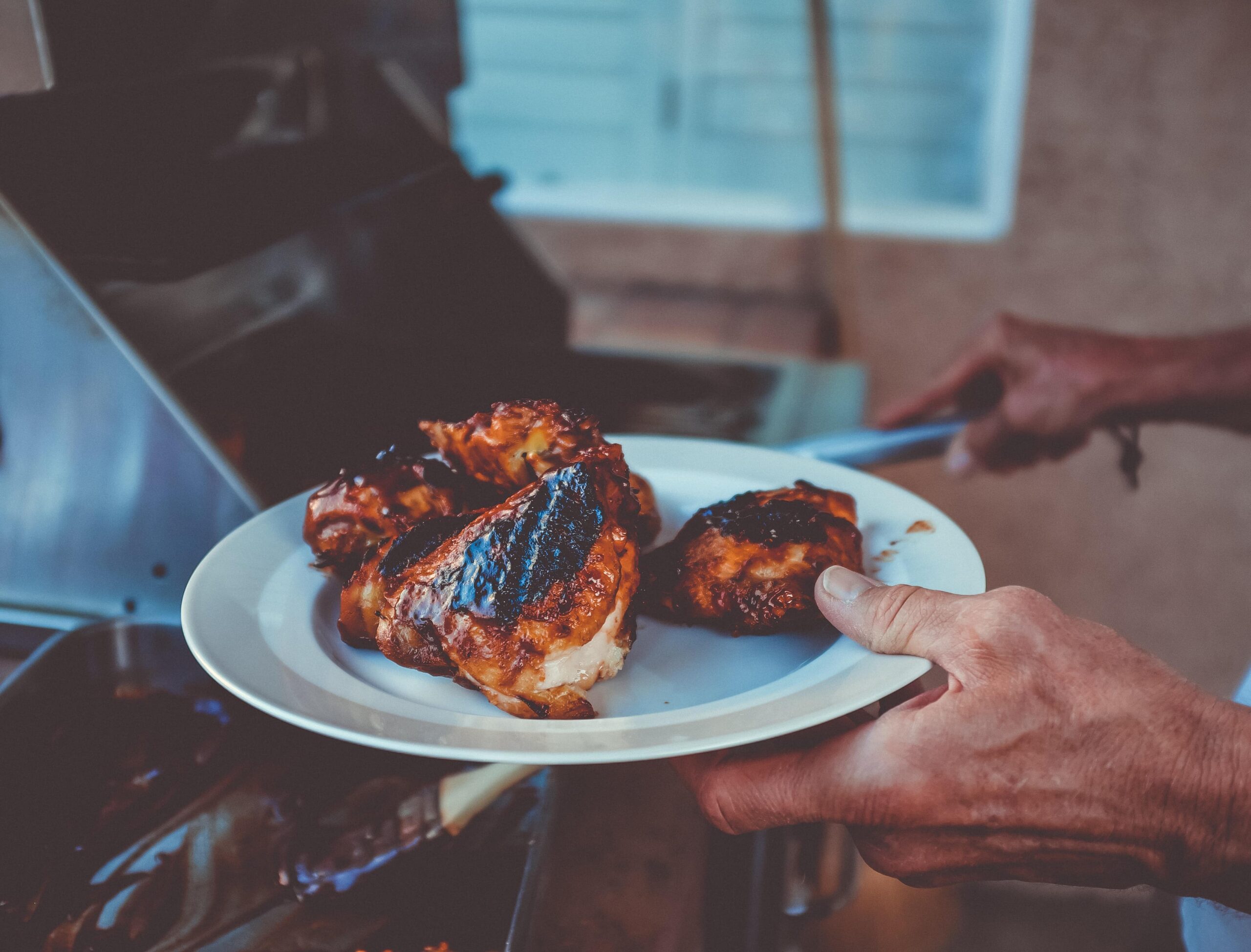
Island Beach Chicken
Dishes like these may be found in any of the beachy island resorts like Jamaica, the Bahamas, the Virgin Islands, or Barbados. They all cook over live fire and utilize a spicy, highly seasoned mojo.
Island Beach Chicken is so named because it looks like jerk chicken. the Bahamas, the Virgin Islands, and Barbados are all islands with this dish.

Lobster Salad
Nothing beats Caribbean Lobster in terms of richeness. Our lobsters, unlike their Atlantic cousins, do not have claws, yet they are exceptionally juicy, naturally garlicky, and have a sweet marine flavor. Serve this salad on a bed of locally grown baby greens and enjoy the sea taste.
What's the Travel Budget for The British Virgin Islands?
Flights
- Flights start at roughly $230 from nearby countries. Tickets however on average cost around $700 and can cost way more depending on which class and from which country you depart from.
Accommodation
- Nomad Backpacking style travelers can expect to spend around $220 for a week
- Budget travelers can expect to spend around $400 for a week
- Mid-range travelers can expect to spend around $910 for a week
- Luxury travelers can expect to spend around $2500 for a week
Food Budget (Three meals and drinks)
- Nomad Backpacking style travelers can expect to spend around $25 per person per day
- Budget travelers can expect to pay around $40 per person per day
- Mid-range travelers on average would cost $60 to $90 per person per day
- Luxury travelers can expect to pay around $120 to $200 per person per day
Overall Budget Styles (Not including Flights, Tours, Transportation, or Car Rental)
- Nomad Backpacking style travelers can expect to spend roughly $420 for a week
- Budget travelers can expect to spend close to $700 for one person for a week
- Mid-range travelers can expect to spend approximately $1,550 for one person for a week
- Luxury travelers can expect to spend around $3,900 for one person for a week
Flights
- Flights start at roughly $230 from nearby countries. Tickets however on average cost around $700 and can cost way more depending on which class and from which country you depart from.
Accommodation
- Nomad Backpacking style travelers can expect to spend around $220 for a week
- Budget travelers can expect to spend around $400 for a week
- Mid-range travelers can expect to spend around $910 for a week
- Luxury travelers can expect to spend around $2500 for a week
Food Budget (Three meals and drinks)
- Nomad Backpacking style travelers can expect to spend around $25 per person per day
- Budget travelers can expect to pay around $40 per person per day
- Mid-range travelers on average would cost $60 to $90 per person per day
- Luxury travelers can expect to pay around $120 to $200 per person per day
Overall Budget Styles (Not including Flights, Tours, Transportation, or Car Rental)
- Nomad Backpacking style travelers can expect to spend roughly $420 for a week
- Budget travelers can expect to spend close to $700 for one person for a week
- Mid-range travelers can expect to spend approximately $1,550 for one person for a week
- Luxury travelers can expect to spend around $3,900 for one person for a week
Flights
- Flights start at roughly $230 from nearby countries. Tickets however on average cost around $700 and can cost way more depending on which class and from which country you depart from.
Accommodation
- Nomad Backpacking style travelers can expect to spend around $220 for a week
- Budget travelers can expect to spend around $400 for a week
- Mid-range travelers can expect to spend around $910 for a week
- Luxury travelers can expect to spend around $2500 for a week
Food Budget (Three meals and drinks)
- Nomad Backpacking style travelers can expect to spend around $25 per person per day
- Budget travelers can expect to pay around $40 per person per day
- Mid-range travelers on average would cost $60 to $90 per person per day
- Luxury travelers can expect to pay around $120 to $200 per person per day
Overall Budget Styles (Not including Flights, Tours, Transportation, or Car Rental)
- Nomad Backpacking style travelers can expect to spend roughly $420 for a week
- Budget travelers can expect to spend close to $700 for one person for a week
- Mid-range travelers can expect to spend approximately $1,550 for one person for a week
- Luxury travelers can expect to spend around $3,900 for one person for a week
Flights
- Flights start at roughly $230 from nearby countries. Tickets however on average cost around $700 and can cost way more depending on which class and from which country you depart from.
Accommodation
- Nomad Backpacking style travelers can expect to spend around $220 for a week
- Budget travelers can expect to spend around $400 for a week
- Mid-range travelers can expect to spend around $910 for a week
- Luxury travelers can expect to spend around $2500 for a week
Food Budget (Three meals and drinks)
- Nomad Backpacking style travelers can expect to spend around $25 per person per day
- Budget travelers can expect to pay around $40 per person per day
- Mid-range travelers on average would cost $60 to $90 per person per day
- Luxury travelers can expect to pay around $120 to $200 per person per day
Overall Budget Styles (Not including Flights, Tours, Transportation, or Car Rental)
- Nomad Backpacking style travelers can expect to spend roughly $420 for a week
- Budget travelers can expect to spend close to $700 for one person for a week
- Mid-range travelers can expect to spend approximately $1,550 for one person for a week
- Luxury travelers can expect to spend around $3,900 for one person for a week
If you want to know what to pack, read this list below:
- This is a Caribbean island that can get extremely hot, dress accordingly
- Raincoat or Light Waterproof Jacket
- Hiking Boots or Sturdy Sneakers (Shoes You Don’t Mind Getting Wet)
- Sunscreen
- Insect Protection – Repellent and Clothing
- Sunglasses and Sun Hat
- Water Shoes
- Beach Towels/Sarong
- Dry Bag
- Money Belt or Cross Bag
- Portable Medical Kit
- Flashlight or Headlamp
- Copies of your passport.
- Get all the needed vaccinations before traveling
- A power bank is a must in any travel.
- Always have some cash with you just in case there are no ATMs and if you are dealing with a business that solely accepts cash
- Get yourself an adapter for your gadgets
- 1 toothbrush
- 1 tube of toothpaste
- 1 razor
- 1 package of dental floss
- 1 small bottle of shampoo
- 1 small bottle of shower gel
- 1 towel
- Deodorant
- Band-Aids
- Hydrocortisone cream
- Antibacterial cream
- Earplugs
- Tylenol
- Hand sanitizer (germs = sick = bad holiday)
- A key or combination lock
- Zip-lock bags
- Plastic bags (great for laundry)
- Universal charger/adaptor
- LifeStraw (A water bottle with a purifier)
- 1 dry shampoo spray & talc powder
- 1 hairbrush
- Makeup you use
- Hairbands & hair clips
- Feminine hygiene products
Clothing For Boys
- 1 pair of jeans or khaki pants
- 1 pair of shorts
- 1 bathing suit
- 5 T-shirts
- 1 long-sleeved T-shirt
- 1 pair of flip-flops
- 1 pair of sneakers
- 6 pairs of socks
- 5 pairs of boxer shorts
Clothing For Girls
- 1 swimsuit
- 1 sarong
- 1 pair of stretchy jeans
- 1 pair of leggings
- 2-3 long-sleeve tops
- 2-3 T-shirts
- 3-4 spaghetti tops
- 1 light cardigan
Want to plan your own trip, here are some of the best resources that can help you
- Skyscanner – They search small websites and budget airlines that larger search sites tend to miss. They are hands down the number one place to start.
- Momondo – This is another favorite flight search engine because they search such a wide variety of sites and airlines. Always check here too.
- Booking.com – The best all-around booking site that constantly provides the most affordable and lowest rates. They have the widest selection of budget accommodation.
- Couchsurfing – This website allows you to stay on people’s couches or spare rooms for free. It’s a great way to save money while meeting locals who can tell you the ins and outs of their city. The site also lists events you can attend to meet people (even if you’re not staying with someone).
- Intrepid Travel – If you want to do group tours, go with Intrepid. They offer good small group tours that use local operators and leave a small environmental footprint.
- Grassroots Volunteering – For volunteering, Grassroots Volunteering compiles a list of good local volunteer organizations that keep the money within the community.
- Get Your Guide – Get Your Guide is a huge online marketplace for tours and excursions. They have tons of tour options available in cities all around the world, including everything from cooking classes, walking tours, street art lessons, and more! It has the world’s largest collection of things to do with more than 30,000 activities in 7500 destinations.
- SafetyWing – Safety Wing offers convenient and affordable plans tailored to digital nomads and long-term travelers. They have cheap monthly plans, great customer service, and an easy-to-use claims process that makes it perfect for those on the road.
- Trip Advisor: Check the reviews and then book your accommodation. TripAdvisor is where you go when you want to compare prices with multiple accommodation providers.
- VRBO: is the main search engine to use when you are looking for a home or apartment rental. It can sometimes be cheaper than hotels and it is the best way to stay in areas that offer a more local feel.
- Hostelworld: With one of the largest databases of hostels in the world, Hostelworld is the go-to site when you are looking for budget accommodation.
- Rome 2 Rio: If you want to see how to get somewhere by plane, train, bus, ferry, or car Rome2Rio lays it all out for you as well as related costs.
- World Nomads Insurance: When traveling you should always have travel insurance. We have found the best bang for your buck is by far World Nomads.
Final Thoughts on The British Virgin Islands
The territory of The British Virgin Islands offers a diverse and rich Caribbean culture influenced by many countries and evident throughout the country, with its past, lovely architecture, welcoming people, and beautiful nature making it so appealing and even scenic thanks to this mix. This only means that BVI is a destination worth visiting. From the lovely National Parks to the remote islets, natural marvels, and beautiful landscapes, the beauty of The British Virgin Islands is a panoramic one. Would you visit BVI?
Have you been to The British Virgin Islands? Let us know how your trip was in the comments below.